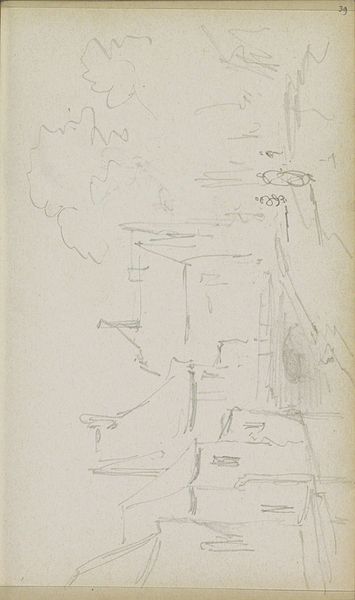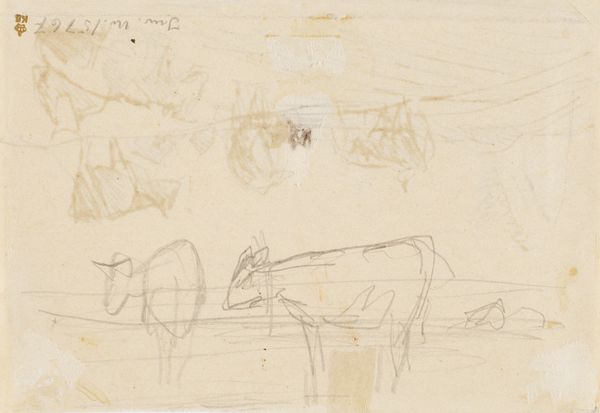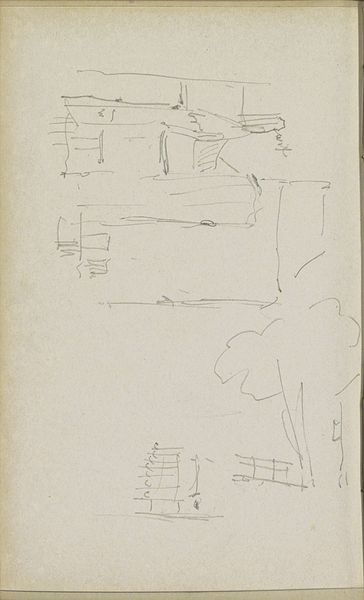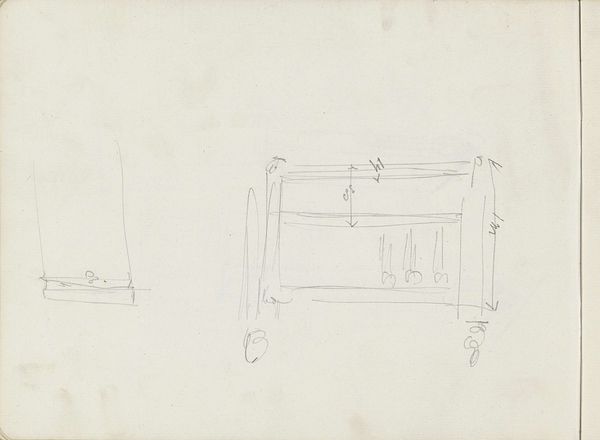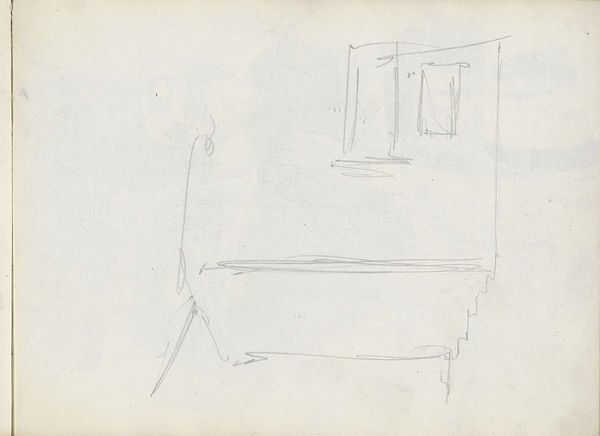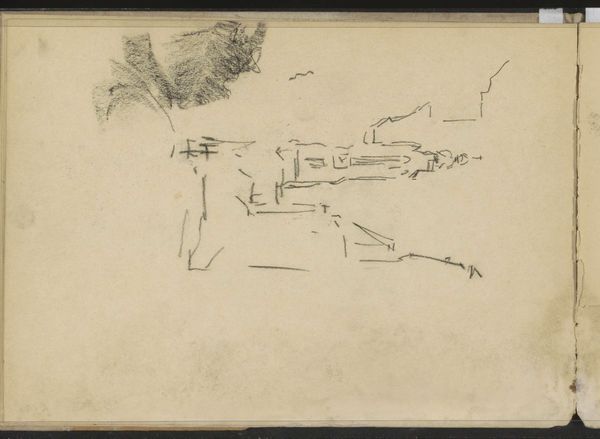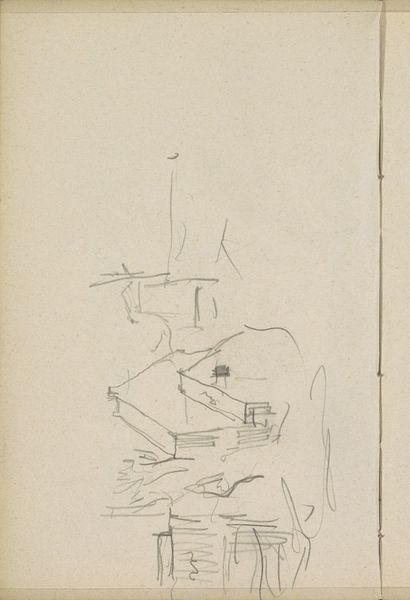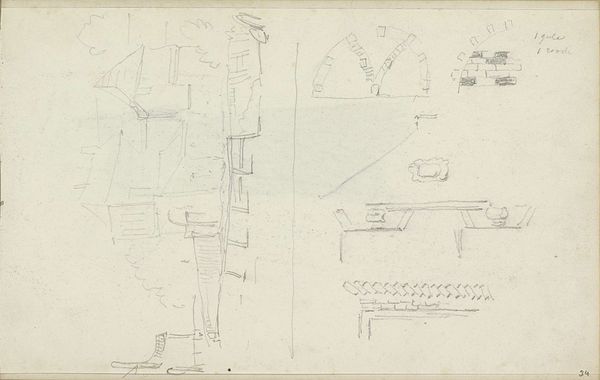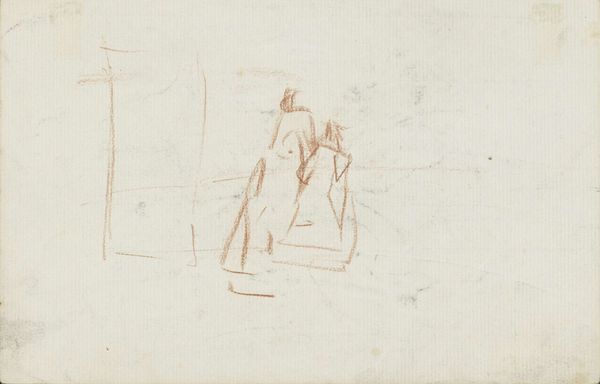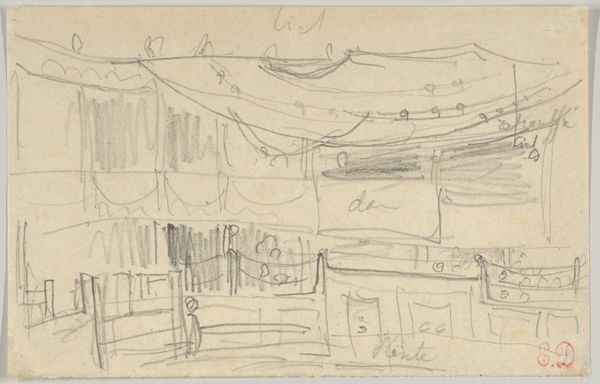
Studieblad met een fauteuil en een staand meisje, in profiel 1875 - 1934
0:00
0:00
isaacisraels
Rijksmuseum
Copyright: Rijks Museum: Open Domain
Curator: Here we have Isaac Israels' "Studieblad met een fauteuil en een staand meisje, in profiel" which roughly translates to "Study sheet with an armchair and a standing girl, in profile". Dating from between 1875 and 1934, it's a delicate pencil drawing on paper, housed here at the Rijksmuseum. Editor: The immediacy is what strikes me; it’s fleeting. I notice the sparse lines forming these chairs and a figure. It feels like a record of a momentary observation. Curator: Absolutely. Israels was very much engaged with capturing modern life, particularly scenes of leisure and labour. These were rapid sketches, likely done in situ, perhaps in a drawing room or studio. What could these quick studies tell us about Israels' method? The paper itself is an inexpensive support, pointing to the work’s functional use. Editor: The form! It's fascinating how little information Israels uses. We see the structural essence of these objects and the human form—just enough to register recognisably, all achieved with line, mass and scale. The chair rendered with the most weight. Curator: And that positioning! They really do appear to float on the page. And if we consider that Israels came from a well-connected, artistic family—his father was Jozef Israels, a celebrated painter of the Hague School—this drawing offers insight into the training, influences and societal standing afforded to artists of the time. Access to models, materials and informal artistic instruction, perhaps. Editor: Good point, it also underscores how a single sketch speaks of that creative labor of the production. What an artist finds worth saving and repeating becomes so telling here. Note the marks, not just creating but correcting and discovering in graphite. The hatching adding darkness and direction. Curator: Precisely! It allows us a glimpse into the artist's thought process. What this sketch makes evident is how impressionistic brushwork became translated through another medium— here, delicate pencil strokes capture light, form, and movement on paper rather than canvas. Editor: Well, examining its visual components offers valuable insights into its style, composition and place within a broad range of impressionistic mark making. Curator: True, and contextualized, we understand more of Israels' practice and that of artists working across a transforming European socio-economic landscape during his lifetime.
Comments
No comments
Be the first to comment and join the conversation on the ultimate creative platform.
